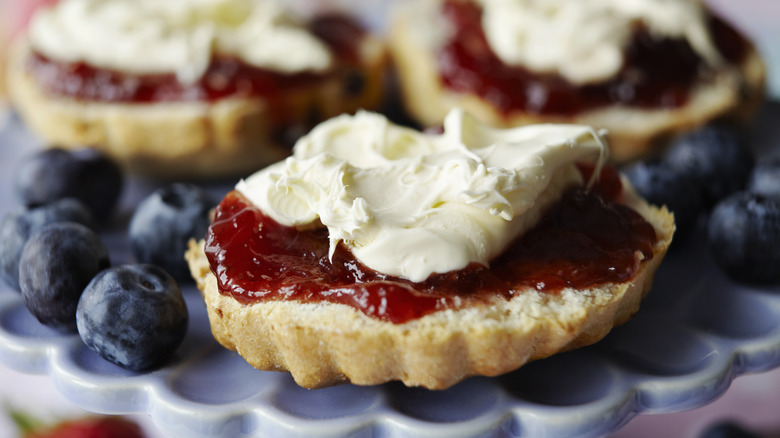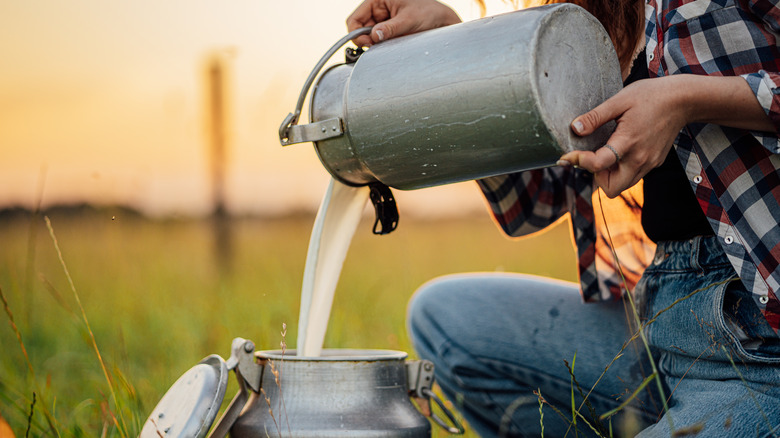The Reason Clotted Cream Is Sometimes Banned In The United States
Scones served with jam and clotted cream are a British staple. If you've ever had them before, you know why – they're delicious. You can buy jam and even scones at your local grocery store, but clotted cream is a different story. But why? After all, we may have said goodbye to British rule in the 18th century, but we kept its language, flag colors, and even the imperial measurement system. Of all the things to give up, why did clotted cream have to be one of them?
It turns out, you can find clotted cream in the United States — you just have to know where to look (and still it might not be in your state). Clotted cream is traditionally made with unpasteurized cow's milk. Pasteurization is a common food-safety process that uses high temperatures to kill off any dangerous bacteria or viruses in food.
In 1987, the federal government made it illegal to sell raw, unpasteurized milk across state lines. State governments were left to decide if they would allow the sale of raw milk. While some chose to make it legal, raw milk is still not widely available and often can only be sold under particular conditions. This legal landscape means it's sometimes seriously difficult to make, sell, and buy products made with raw milk — including clotted cream. So, while clotted cream isn't technically banned nationwide, you'll be hard-pressed to find a local distributor unless your state allows the sale of raw milk or you choose to import clotted cream.
What is clotted cream, anyway?
There's another reason we don't see a lot of clotted cream in America. In order to be considered authentic, some argue that clotted cream must come from the Devon or Cornwall regions of England. In its original form, clotted cream is a thick, spreadable cream made from raw, full-fat milk. The process takes hours to complete and the final result is a creamy substance with a buttery texture and a rich milky taste (some might say it tastes like unsalted butter). It's so rich, in fact, that in order to be "real" clotted cream, it must have at least 55% butterfat. Although purists will likely disagree, clotted cream can also be made from regular cream (this is likely what you're eating if you spot clotted cream on an American menu).
Clotted cream is typically served with scones and jam, but it can be enjoyed on any bread or scooped over fresh berries. It's a common dessert ingredient in the U.K. and even makes some appearances in protein-heavy main dish recipes there. If you don't have access to a clotted cream vendor near you, don't let that stop you. You can make your own clotted cream at home (and while you're at it, craft your own scones and jam for a DIY afternoon tea — which is different from high tea, by the way). While it might not be the same as sourcing raw milk from pasture-raised cows of Dover, we think you'll like it just fine.

